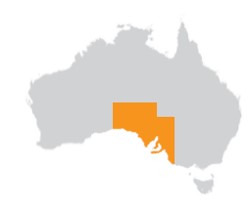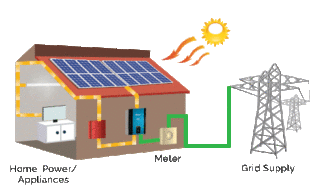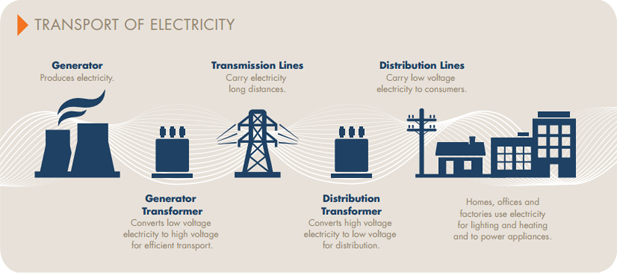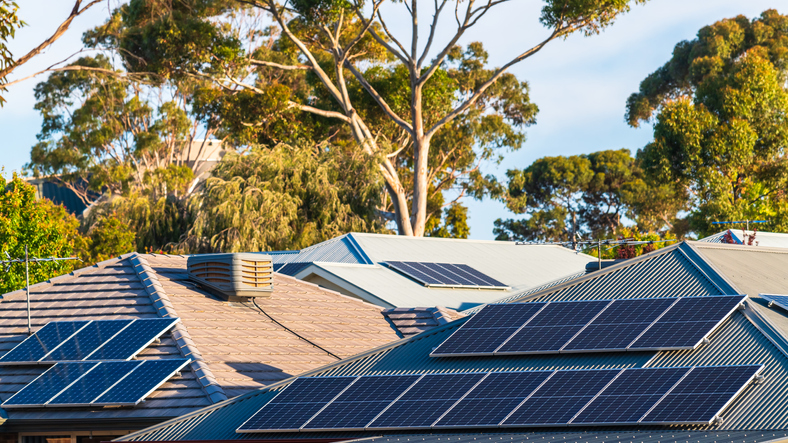Is there a minimum solar feed-in tariff in South Australia?
Compare electricity plans in your area now
Best Solar Feed-In Rates in South Australia
| Retailer | State / Territory | Min Solar FIT | Max Solar FIT | Detailed Conditions |
| ENGIE | SA | 4.0 c | 11.0 c | System size 30kW max |
| EnergyAustralia | SA | 4.5 c | 10.0 c | |
| Alinta Energy | SA | 4.0 c | 10.0 c | System size 5kW max |
| AGL | SA | 4.0 c | 10.0 c | System size 10kW max |
| Origin Energy | SA | 4.0 c | 8.0 c | Only if buy solar through Origin – 10kW max |
| CovaU | SA | 0.0 c | 5.5 c | |
| Diamond Energy | SA | 0.0 c | 5.2 c | |
| Red Energy | SA | 3.0 c | 4.5 c | |
| Lumo Energy | SA | 3.0 c | 4.5 c | |
| RAA Energy | SA | 4.0 c | 4.0 c | |
| Dodo | SA | 3.5 c | 3.5 c | |
| Next Business Energy | SA | 3.3 c | 3.3 c | |
| Future X Power | SA | 3.0 c | 3.0 c | |
| Momentum Energy | SA | 0.0 c | 2.5 c | |
| iO Energy | SA | 0.0 c | 2.0 c | |
| Energy Locals | SA | 0.0 c | 2.0 c | |
| OVO Energy | SA | 0.0 c | 2.0 c | |
| 1st Energy | SA | 1.5 c | 1.5 c | System size 10kW max |
| GloBird Energy | SA | 1.0 c | 1.5 c | |
| Kogan Energy | SA | 0.0 c | 1.4 c | |
| Powershop | SA | 0.0 c | 1.4 c | |
| Sumo | SA | 1.0 c | 1.0 c | |
| Amber | SA | 0.0 c | 0.0 c | |
| Pacific Blue | SA | 0.0 c | 0.0 c | |
| ZEN Energy | SA | 0.0 c | 0.0 c | Market linked FIT (Variable) |
| Nectr | SA | 0.0 c | 0.0 c | System size 10kW max |
| Tango Energy | SA | 0.0 c | 0.0 c | Market linked FIT (Variable) |
| Powerclub | SA | 0.0 c | 0.0 c | Market linked FIT (Variable) |
What retailer has the best solar feed-in tariff in South Australia?
Should I only think about solar feed-in tariffs when choosing a provider?
Every household will have to weigh their respective factors on a case by case basis. For those that have large solar systems, they can export plenty of excess clean electricity back into the grid, so a high solar FiT may be an important factor. Conversely, for someone that has a small solar system, they may want to put more weighting towards lower rates or supply charges due to the fact they’ll receive less potential charges on their bill.
Compare electricity plans in your area now
History of feed-in tariffs in SA
There used to be a minimum guaranteed feed-in tariff at a generous 44c/kWh, which was in place up until 30 September 2011. This was at the time a big motivational driver for consumers to switch to solar.
Then in 2012, ESCOSA released a draft determination for a transitional solar feed-in tariff of 23c/kWh for SA residents who applied between 27 January 2012 and 30 June 2012.
Previous applications who were lucky enough to receive the premium feed-in tariff before 30 September 2011 were initially on 44c/kWh before this change was put into effect. Those lucky solar system owners had this premium rate locked in until 2028.
However, those who didn’t have access to SAs premium feed-in tariff rate would at least receive 6.8c/kWh which was mandated by ESCOSA. Solar Choice recommended that they shop around for the best rate, plan and retailer as now there was competition based incentives for doing so.
In actuality the transitional rate was rather complicated looking back at it. It was set at a significantly reduced rate of 16c/kWh plus an additional set contribution required from electricity retailers who accepted solar customers (i.e. approximately 16c/kWh government rebate plus 6-8c/kWh estimated electricity retailer contribution). This transitionary period was for those who signed up during the two years from 1 October, 2011.
Then towards the end of 2016, ESCOSA decided to eliminate the minimum feed-in tariff for SA. SA effectively followed NSW and South-East Queenslands decision in removing minimum rates and hence left it up to market competition in determining what rates consumers would receive. The effect of this on consumers was now it was their responsibility to shop around and find the best rate, plan and company they preferred.
The implication of this change was deemed to be relatively small however.
Despite the low feed-in rate, households still continued to switch to solar in droves because of the fact that solar affordability has increased a lot over the last 10 years. Further compounding this is that grid electricity prices are high in South Australia (due to high cost of wholesale electricity)
What are the network limits in SA?

In hindsight you could argue that the original architects of the current solar grid system weren’t forward thinking in terms of the ability of solar PV owners to be able to sell excess energy back into the grid.
Hence, the reason why there are network limits on the ability to feed electricity back into the grid as it was originally designed to be unidirectional in nature. Perhaps in the future with advances in grid technology, South Australians will be able to enjoy a higher upper limit on their ability to export back to retailers.
Conclusion:
Not installed solar yet? Compare solar quotes online now
- Solar Panel Costs: Solar Choice Price Index | April 2025 - 1 April, 2025
- Solar Panels For Homes – All You Need to Know About Solar Systems - 18 March, 2025
- Best NSW Solar Feed-In Tariffs - 17 March, 2025
